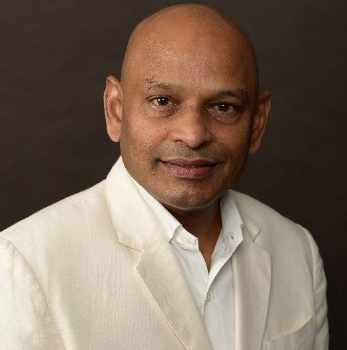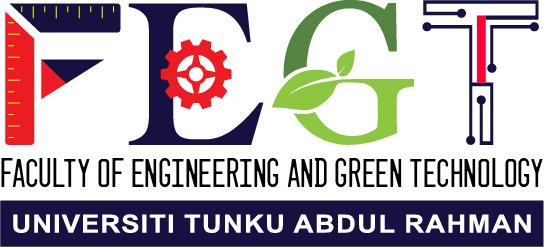Keynote Speaker

Prof. Seeram Ramakrishna
FREng, FBSE, Everest Chair, Circular Economy Taskforce,National University of Singapore, Singapore
Speech Title: Intelligent Materials & Systems: Healthcare
Abstract: Biomaterials development is synonymous with improvements in the healthcare outcomes and well-being of human race on planet earth. This can be appreciated from the critical importance of personal protection equipment (PPE), facemasks, temperature measurement devices, sensors, diagnostic kits, emergency medical care, vaccines, and medicines used worldwide to eradicate the COVID19 pandemic (https://doi.org/10.1016/j.bios.2020.112731). The isolation and social distancing measures due to COVID19 also affected the emotional and mental wellbeing of people and healthcare professionals. A technology start-up company Neuralink (https://www.neuralink.com/) announced a neural interface or in-brain device that could potentially solve neurological challenges from memory loss, hearing loss and vision loss to paralysis, depression and brain tissue damage. Moreover, it is envisaged that with further research and innovation the brain-machine interface will enable humans to control external devices such as computers and phones via thoughts. Aforementioned enabled by the advances in the field of biomaterials science & engineering, and availability of thousands of diverse biomaterials.
History of biomaterials is akin to 300,000 years of existence of human race on the planet earth (https://doi.org/10.1080/07373937.2020.1829885). For most part, humans relied on easily sourced materials from the immediate nature. Over the recent 2,000 years, humans learnt to process raw materials sourced from the nature into useful metals & alloys and ceramics. More recently, i.e. 20th century, humans learnt to produce a range of synthetic polymers and their composites with ceramic additives. Via trial and error, humans found out that a few of these numerous engineered materials are suitable for treating or augmenting diseased or damaged tissues of the human body. As they are not purposefully designed to appropriately interact with the host tissues of human body, they are denoted as ‘passive biomaterials’. In recent three decades, building on the advances in molecular biology, biochemistry, stem cells, biotechnology and biomedical engineering, the biomaterials are purposefully designed to interact with the host tissues and cells in specific ways for realising improved health care outcomes. They are designed by mimicking the microstructure and underpinning functional mechanisms of natural and healthy tissues of the human body. Hence, we can denote them as ‘engineered biomimetic biomaterials’, which are being experimented in the emerging fields of tissue engineering, regenerative medicine, stem cells, and nanomedicine. Moving forward, ‘intelligent biomaterials’ are necessary to meet the growing demands of healthcare. Wherein, an intelligent biomaterial or cognitive biomaterial can be described to have the ability to be aware of external stimuli and learn from it to optimize response behaviors for achieving its choices or goals to the greatest extent for optimal performance. Intelligent biomaterials are capable of processing external signals as well as internally generated signals in order to take actions that maximize its chance of successfully achieving its goals (Liu et al., Intelligent Materials, Matter, 2020, https://doi.org/10.1016/j.matt.2020.07.003). Currently, available protein and lipid based bioactive materials, shape memory materials, piezoelectric materials, photoelectric materials, and thermoelectric materials are nascent examples of intelligent biomaterials. Often, the scientific literature refers them as smart biomaterials. Recent advances in quantum biology (https://www.technologyreview.com/2019/11/09/238365/a-natural-biomolecule-has-been-measured-acting-in-a-quantum-wave-for-the-first-time), and examples of intelligent materials in the nature inspire the biomaterials community to advance the domain of intelligent biomaterials.
This lecture will illustrate the intelligent biomaterials & systems necessary to enable futuristic healthcare and well-being. Moreover, the potential for more effective antimicrobial and antiviral surfaces and treatments; regenerative medicine; neural interfaces & neuroprosthetics; next generation medical devices; wearables and personalised healthcare will be deliberated in this lecture.
Biography: Professor Seeram Ramakrishna, FREng, FBSE, Everest Chair is among the top three impactful authors at the National University of Singapore, which is ranked among the top ten engineering universities of the world. He is the Director of Center for Nanotechnology & Sustainability. Listed among the top three scientists of the world in Biomedical Engineering based on career-long impact of researchers or c-score. Thomson Reuters identified him among the World’s Most Influential Scientific Minds. His Google Scholar citations reach ~116,000 and H-index 160. Clarivate Analytics recognized him among the Top 1% Highly Cited Researchers in the world in materials science and cross-fields categories. Microsoft Academic ranked him among the top 50 impactful persons out of three million materials researchers worldwide. He co-authored books An Introduction to Biomaterials Science & Engineering; Medical Devices- Standards, Regulations and Practices; Biomaterials- A Nano Approach; and An Introduction to Bio-composites. He is the Biomaterials Editor of Elsevier Current Opinion in Biomedical Engineering. He is regarded as the guru of electrospinning and nanofibers for diverse applications. Prof. Ramakrishna is an elected Fellow of UK Royal Academy of Engineering (FREng); Singapore Academy of Engineering; Indian National Academy of Engineering; and ASEAN Academy of Engineering & Technology. He is also an elected Fellow of American Association of the Advancement of Science (AAAS); ASM International; American Society for Mechanical Engineers (ASME); American Institute for Medical & Biological Engineering (AIMBE); Institution of Mechanical Engineers, IMechE and Institution of Materials, Minerals & Mining, IoM3, UK; ISTE, India; and International Union of Biomaterials Science & Engineering (FBSE).


